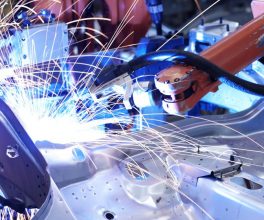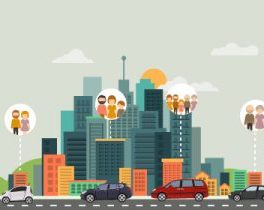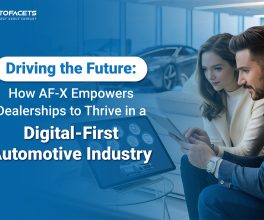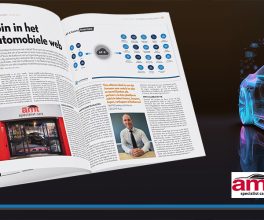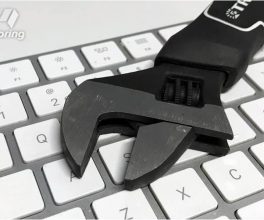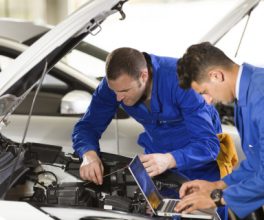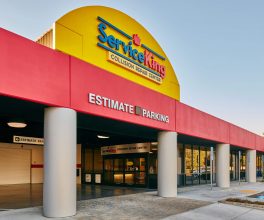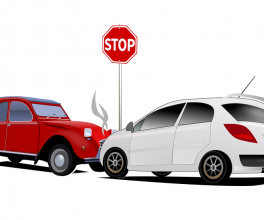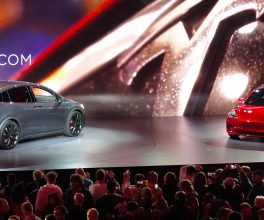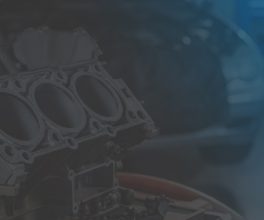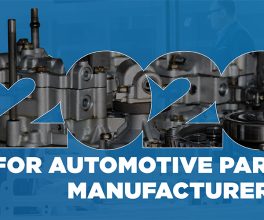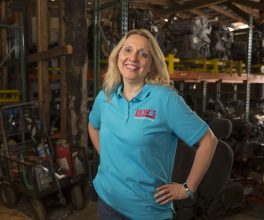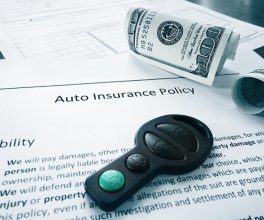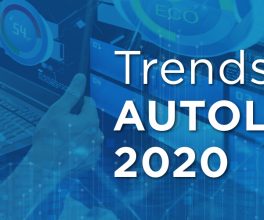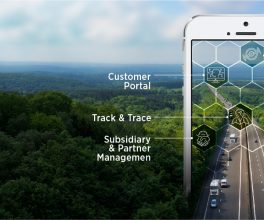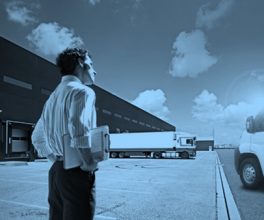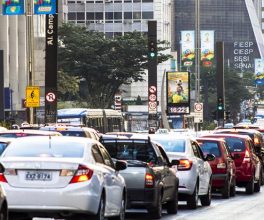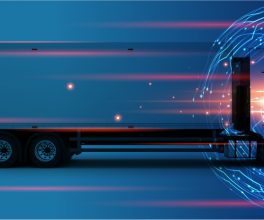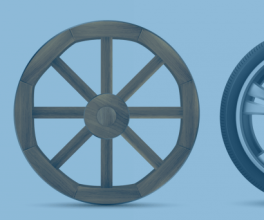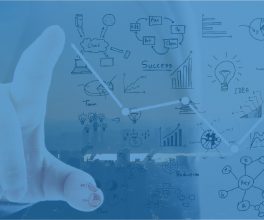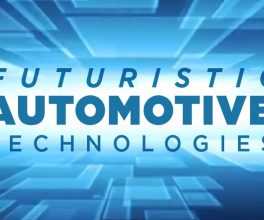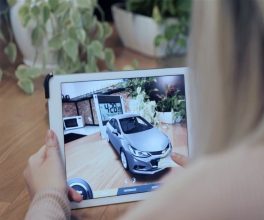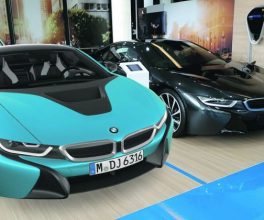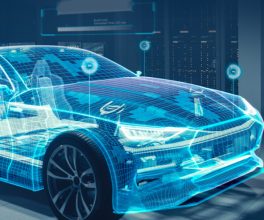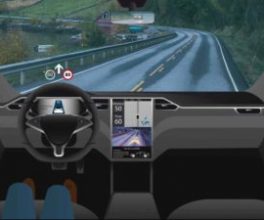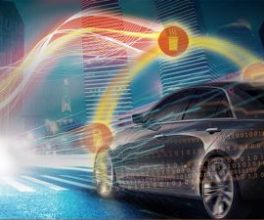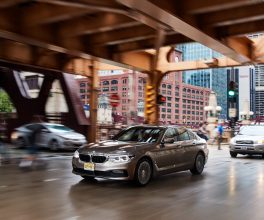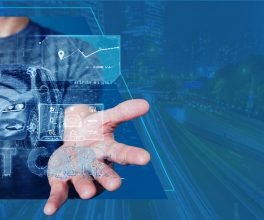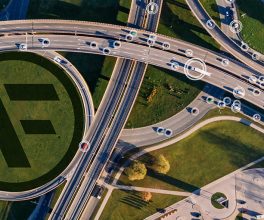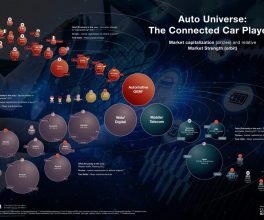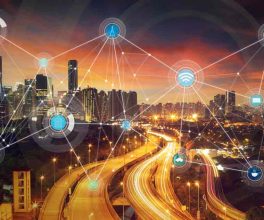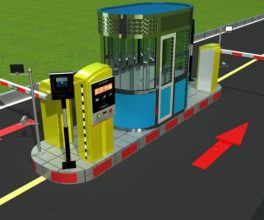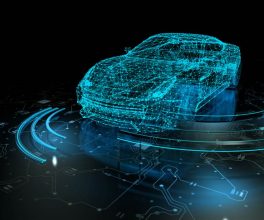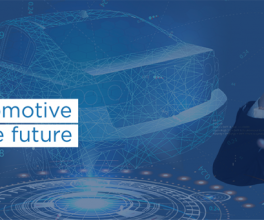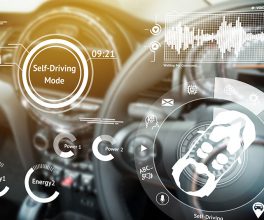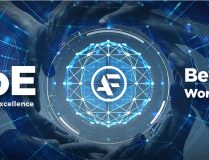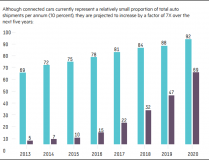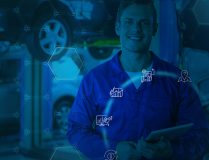The automobile transformed the way people traveled in the 20th century and gave rise to the Big Three U.S. automakers that remain today: Ford, GM and (Fiat) Chrysler. But a massive technological disruption is at the doorstep of the auto industry that promises to reinvent yet again how people travel — through self-driving vehicles, electric cars, car-sharing and car-hailing, among others. These developments are redefining the very idea of the car as an individually owned and human-driver-controlled means of personal transport. In the face of this tectonic shift, will the Big Three and the gasoline-burning autos they make go the way of the horse and buggy?
The answer is not so simple. The big automakers have often been compared to dinosaurs unable to adapt quickly in a fast-moving digital world, but they have weathered severe storms before and survived. There were the high oil prices and gas shortages of the 1970s and the Japanese car manufacturing revolution in the 1980s that resulted in higher quality vehicles from overseas taking market share from the Big Three. Meanwhile, growing public awareness of the dangers of autos began emerging, encapsulated by consumer activist Ralph Nader’s seminal book, “Unsafe at Any Speed.” Automakers had to adapt to new regulations mandating the addition of seat belts, air bags and other safety measures.
The challenges for the industry are different today, and yet not so different. New technologies have arrived to change the way cars have looked and worked in the past century: Vehicles are capable of driving themselves; batteries now run electric vehicles instead of an internal combustion engine, touchscreens have replaced the manual center console as the interface for driver-vehicle communication. What’s not so new is the role of most automakers as master integrators of systems, software, hardware and components. This expertise could be their saving grace in the digital world. Even Tesla, the most successful new automaker in decades, has had to learn this system-integrator role — and the company has chosen a high level of vertical integration in its path to mastery, contrary to observers’ expectations that it would parallel the contract manufacturing model of the digital devices sector.
“The automakers, which are referred to in the industry as OEMs (original equipment manufacturers), still are dominant in the industry because of their system-integration role and capability,” said Wharton professor John Paul MacDuffie at the recent Connected Truck, Connected Car Conference. He is the director of the Program on Vehicle and Mobility Innovation (PVMI), the largest and oldest consortium on the global automotive industry with a network of more than 50 scientists, management experts and engineers across at least 25 universities globally.
PVMI succeeds MIT’s vaunted International Motor Vehicle Program (IMVP). Founded in 1979, IMVP is best known for recognizing the competitive advantage brought by the “lean production” manufacturing model, as part of its analysis of the crisis that engulfed the automakers in the 1970s and 1980s. The founders encapsulated their findings in the classic book, The Machine That Changed the World: The Story of Lean Production. Since 2013, PVMI has been part of Wharton’s Mack Institute for Innovation Management and seeks to broaden the scope of IMVP to include more technologies, business models and services as well as make comparisons across sectors related to mobility.
“The automakers … still are dominant in the industry because of their system integration role and capability.” – John Paul MacDuffie
Then and Now
The automobile is a complex, multi-technology product with components supported by a multi-tiered global supply chain. “In an automobile, you have many technologies that are connected in complex ways to all the different functions that are provided,” MacDuffie said. And the arrival of new technologies will raise the level of complexity even more. Already, software is taking a key role in a vehicle. For instance, he said, the average Ford auto by 2010 already had more lines of code than a Boeing Dreamliner aircraft.
So even if some see major automakers as aging dinosaurs that are “large, slow and facing extinction” compared to digital startups, those manufacturers that can manage high complexity “are positioned to wage war against new challengers, particularly in the next few decades when the new technologies will face the biggest diffusion challenges,” MacDuffie said. “Ultimately, OEM competitiveness has less to do with pure technology development and much more to do with how well they can leverage their system-integrator role to deal with the demands of new markets, new customers, new business models and the like.”
MacDuffie continued: “The technology companies bring essential expertise in software development and artificial intelligence (AI) plus a fresh approach to innovating in both vehicles and mobility services, but the OEMs can be crucial complementors whose capabilities are needed for the connected and autonomous — and electric — future to be realized.”
That’s not to say the auto industry hasn’t changed. It is changing, but at a more moderate pace than what today’s technological developments would seem to dictate. For example, automakers globally used to eschew alliances with competitors or companies outside the industry. Now, they are more open to striking partnerships with — and even acquiring — tech firms in order to access the technology and talent they need.
Both OEMs and tech companies face a learning curve in these collaborations. For example, Ford first partnered with Microsoft to develop an in-vehicle interface and infotainment center called Ford Sync — and customers didn’t like the result. Ford also acquired tech startup Livio and made its ‘SmartDeviceLink’ software a platform for connecting smartphone apps to the vehicle interface. It hired Panasonic for integration of connected software with the rest of automotive electronics in Sync 3.0 and it is partnering with Toyota to make future generations of ‘SmartDeviceLink’ open source to attract developers.
Finally, Ford agreed to license Android Auto and Apple CarPlay for installation in every 2017 model. This mix of acquisition, partnering and licensing across both automotive and technology suppliers, rare in the past, is likely to become the norm in the future as different coalitions of firms compete for a lead position in connected and autonomous vehicles, according to MacDuffie.
Major automakers from Ford to Volkswagen and the Renault-Nissan alliance are developing fully autonomous vehicles, and some are adding new business models, too. Last year, GM took a half-a-billion dollar equity stake in Lyft — and then launched its own car-sharing service called Maven. Earlier this year, Maven Gig, which lets drivers of car-hailing services like Uber and Lyft rent GM cars, started operations.
Meanwhile, BMW is offering ReachNow, a car-sharing and hailing service while Daimler AG has its global ride-sharing service car2Go. “We have a producer engaging with customers in a different way than normal,” said Nicolaj Siggelkow, Wharton professor and co-director of the Mack Institute, at the conference. Instead of interacting with consumers only a few times in their lives when they buy a car, he observed, automakers are in touch more often through these micro-interactions.
“There is an enormous amount of technological determinism in the air.” – James Womack
Car companies are dabbling with peer-to-peer (P2P) programs, as well. Siggelkow described three models: the transaction network model in which users pay to use or be part of the network, such as the way the dating site Match.com operates; the advertising-supported network model similar to Facebook; and networks that complement the user, such as a footwear company creating a virtual running club for consumers. However, finding P2P applications for mobility is not easy to do. In 2016, Ford unveiled a service called Credit Link — it lets six people lease one vehicle together and offers an app that allows them manage payments and availability. But no one signed up for it, Siggelkow said.
Should automakers adopt a technology just because it’s there? “There is an enormous amount of technological determinism in the air,” said James Womack, co-founder of MIT’s IMVP program and founder of the Lean Enterprise Institute, who spoke at the conference. “We can do autonomy so we will do autonomy. History is littered with things that are technologically inevitable that never happened.” Instead, he advised car companies to “focus on the problem first before you focus on the solution.”
Universities have a unique role to play in identifying problems and guiding solutions because unlike the usual stakeholders — auto companies, insurers, government officials and others — they don’t have a vested stake in the outcome. Back in the days of the IMVP program, MIT acted as an “honest broker” that was able to get even the fiercest competitors among U.S., European and Japanese automakers to sit and talk together, along with regulators, said Daniel Roos, another co-founder of IMVP.
Womack and Roos noted that the questions the industry faces have changed, and changed back, over time. In IMVP’s predecessor program, the “Future of the Automobile,” initiated amid the energy crisis of the early 1980s, the focus was on whether social concerns about the negative consequences such as air pollution, energy dependence and congestion — plus new technologies such as “intelligent highways” — would change the central role of the automobile in developed economies.
A few years later, under IMVP, the big question was one of global competitiveness — whether the Toyota Production System (dubbed “lean production” by IMVP) and its new approaches to manufacturing, supply chain, and product development would successfully displace the then-dominant mass production model pioneered by Ford and GM in the early 20th century. Now, at a time of relative parity in global competition among the big OEMs, mobility questions related to new technologies and societal priorities are back. Today, the decisions are about ‘intelligent vehicles’ and what new business models and revenue streams — as well as what public health goals such as reduced accidents and deaths — can be advanced from their development and diffusion.
Shortcomings of Tech Companies
Technologists often point to Tesla as the auto industry’s most successful disruptor. “Those who are impressed point out that we haven’t seen another OEM emerging from nothing and in such a vertically integrated way in many years,” MacDuffie said. “They’ve built a strong brand” with their high-quality luxury cars and reinvented the car retail experience, helping to fuel its lofty valuation. As of July 26, Tesla had a market cap of $56 billion compared to $44 billion for Ford and $53 billion for GM — even though it sold only about 76,200 cars in 2016 compared to 6.6 million for Ford while GM sold a record 10 million globally.
“Will there be one operating system for cars to increase safety and interoperability? Most likely no.” – John Paul MacDuffie
But one limitation is Tesla’s high car prices of around $70,000 to $150,000 fully loaded. “They’re making very expensive vehicles sold to rich customers with the average retail price per unit well above Mercedes and BMW,” said MacDuffie. Tesla has a $35,000 Model 3 that recently began deliveries, but producing a mass market vehicle at scale is a “hard thing to do,” he added, and it is “perhaps the biggest challenge that Tesla has faced to date.”
To cut production costs, Tesla CEO Elon Musk’s vision is to have virtually no humans assembling cars. MacDuffie called that the elusive “Holy Grail” of the industry. “Every auto company tried it in the 1980s … and failed.” The robots were too inflexible and expensive, required too much maintenance, among other issues. While welding and painting tasks are nearly 100% automated, it is still challenging to fully automate assembly tasks. Most OEMs opt for a mix of inexpensive ‘pick and place’ robots that relieve the ergonomic burdens of human workers by maneuvering heavy parts as they work side-by-side on the assembly line.
As for Uber, MacDuffie said it grew so quickly by making inroads against taxis while ignoring local regulatory restrictions. Far from achieving monopoly status, Uber has encountered national, regional and local competitors that have emerged to battle for market share. “Is the brand enough to carry Uber to success?” he asked. “In a big market, why can’t there be a local competitor that stays in the game?” Examples of such competitors, from Didi Chuxing in China and Yandex in Russia to Lyft in the U.S. and Ola in India, are challenging the narrative of Uber being the “winner-take-all.”
Uber’s driverless car play also faces unanswered questions. “Are individuals going to buy the autonomous vehicle and lease it to Uber one by one? I doubt it,” MacDuffie said. Nor will Uber want to own the driverless cars itself; this would be at odds with its ‘asset-light’ strategy. More likely, Uber, as well as its competitors, will contract with a firm that has expertise in the acquisition, maintenance and efficient deployment of fleet vehicles, such as Penske or Avis. However, he said, dependence on these contractors will likely affect the margins of these ride-hailing companies.
Meanwhile, the challenge for Google’s autonomous vehicle unit, Waymo, is to become the dominant operating system. But that’s by no means assured, if the history of the auto industry is any guide. In the past, automakers have resisted cooperating on industry standards and in many cases opted to keep their proprietary systems to protect market share. They could do so again. “Will there be one operating system for cars to increase safety and interoperability, either by market dominance or regulatory mandate? Most likely no,” MacDuffie said.
Even Apple’s planned foray into autonomous vehicles will be challenging. “Tesla’s example shows that it’s neither fast nor easy to become an OEM,” MacDuffie said. Unlike iPhones where Apple can hire a company like China’s Foxconn to make the handsets, “there’s not a thriving set of automotive contract manufacturers out there, and any new entrant in that space would have to be able to meet global standards for automotive production — from quality to meeting regulatory requirements — right off the bat.”
Moreover, automakers like BMW will never agree to be the ‘Foxconn’ for an Apple car no matter how beautifully designed it is nor how much Apple is willing to pay them, MacDuffie predicted. “More likely than seeing Apple and Google decide to be new OEMs, like Tesla, is that we’ll see coalitions of tech and auto companies — and then a battle of coalitions.”
Getting to 99.9% effectiveness [in safe operations of driverless vehicles] is currently out of reach.
Where tech companies may lead is in the “high sky” of the Internet and cloud computing, while automakers remain as masters of the physical realities of operating on the “ground,” said Takahiro Fujimoto of the University of Tokyo at the conference. It is risky to assume the dynamics of competition and the capabilities needed for success in each realm will easily translate to the other, he claimed. A new arena for heated competition will be the “low sky” where connected technologies enter the vehicle and need to work seamlessly with the “ground” technologies of the electro-mechanical environment and also to communicate effectively and safely with drivers and passengers.
The “low sky” is more akin to the “Internet of Things” (IoT) than the digital products and services tied to smartphones, according to Fujimoto. The flood of data to be gathered and analyzed from connected vehicles and their captive riders will lead to new services and monetization strategies.
But questions remain: Who will control the data? How will other parties, such as insurers, get access to the data to provide the new underwriting models for a driverless world? How will the challenges of cybersecurity, privacy and liability be handled? These “low sky” issues, Fujimoto said, will be impossible for any one player to resolve. OEMs, tech companies, including IoT giants like IBM and Siemens, and regulators will contend for dominance on these issues but may also need to collaborate in order for new informatics and mobility services to be diffused widely.
Regulatory, Legal and Safety Issues
Tech innovations also may run into global, national and local regulations that could crimp their growth. For example, it is illegal in more than a dozen states for an auto manufacturer to sell directly to the public, as Tesla is doing, said Sarah Light, Wharton professor of legal studies and business ethics, at the conference. The law was crafted to prevent auto manufacturers from undercutting car dealers. And Uber has run afoul of taxi regulations, just as another “sharing economy” pioneer, Airbnb, faces charges of violating federal anti-discrimination laws.
Light said the dilemma of regulators and legislators is finding the right balance between encouraging innovation and protecting the public interest. Moreover, crafting regulations to address nascent technologies also brings a lot of uncertainty. “We don’t know if the law we craft today is going to be durable enough to address [issues] five to 10 years in the future,” she added. In 2016, the U.S. government adopted an autonomous vehicle policy clarifying that a vehicle’s hardware and software is part of the vehicle and thus must conform to appropriate federal standards. Notably, this document is not a regulation but simply a guidance, Light said.
Meanwhile, states such as California have gone ahead and proposed state-level legislation on driverless cars. A period of contestation over whether federal or state jurisdiction should govern experimentation with new technologies, particularly driverless cars, is likely. While both auto and tech companies may prefer one set of consistent — and lenient — standards nationally, more may be learned from allowing states to try out different regulatory approaches during this crucial transitional period.
But unless the public embraces these tech innovations, they won’t be adopted. For autonomous vehicles, a big concern is safety. Supporters say driverless cars are safer than manned vehicles because they remove human error. But engineers have to program algorithms to anticipate myriad scenarios that a vehicle could run into — whether it’s a child dashing across the street, a vehicle cutting into a lane, pedestrians walking on a freeway or changing weather conditions, among other situations. “This alone will take years to complete exhaustively,” said Rahul Mangharam, a professor at the electrical and systems engineering department of the University of Pennsylvania.
When can cities see fully unconstrained driverless vehicles? “That may not be achieved in 100 years.” – Richard Bishop
Achieving the ability to handle 90% of driving situations may happen relatively soon; being able to deal safely with 99% is exponentially more difficult and getting to 99.9% effectiveness is currently out of reach, said MacDuffie. It is yet unclear how many accidents and deaths caused by driverless cars the public will tolerate, based solely on a comparison with past levels of human-caused incidents. Also, it is uncertain how much leeway companies should have when experimenting on public roadways with technologies that aren’t proven to achieve a high safety standard.
Mobility Innovation in Cities
Cities will have a special interest in facilitating the diffusion of new vehicle and mobility technologies. They have the density and diversity of population to benefit from the potential of ride-sharing to reduce vehicle ownership and to provide wider and more convenient access to mobility, MacDuffie said. Furthermore, urban design can be re-conceived to accommodate driverless vehicles that operate at a high utilization rate and potentially replace privately owned vehicles that sit in parking lots and garages for most of the day.
Mobility apps are under development on the premise that city dwellers will meet their daily transport needs through a variety of modes, with different configurations chosen on different days. A multi-mode trip could include a combination of the following: public transit for a heavily traveled central city route, city bike, Zipcar-type car share, Lyft-type ride hailing service and a driverless shuttle to get back home at the end of the workday. All connections are planned in advance and a single ticket covers the whole day. This approach will be economically feasible first in cities, while rural and suburban areas will see other mobility solutions and likely more individual vehicle ownership even when those vehicles are highly connected and automated.
Overall, the conference speakers agreed that full deployment of a completely automated set of driverless vehicles would take many years longer than what the media hype would suggest. A much more realistic scenario in the intermediate term is the increased availability of partially autonomous vehicles, in which human drivers still need to be ready to take over at a moment’s notice, as well as the use of driverless cars in constrained environments. Experts say that widespread adoption could first come from the trucking industry because of the anticipated cost savings and increase in efficiency and productivity.
Connected Trucks
It may not be common knowledge, but trucks have been connected for decades. Citizens band radios, part of the public image of truckers and trucking culture, were an early means of connectivity, starting in the 1970s. In the early 2000s, GPS and telematics systems came on board to optimize route and logistics planning, according to Jon DeGaynor, CEO of Stoneridge, a maker of components, systems and modules for commercial vehicles. Today, a truck uses about 400 sensors. He said the trucking industry is open to new technologies because of the economics involved.
Trucks travel more miles and use more fuel than any other mode of mobility. For example, UPS’s Class 8 tractor-trailer commercial class trucks traveled 1.1 billion miles in 2016 and used 390 million gallons of fuel. If new technologies increase fuel economy by even just 1%, the savings would be in the millions of dollars annually. “Trucking companies are already connected in many ways and they have the most to gain,” said Brad Bartkowski, president of Orion Fleet Intelligence, a provider of fleet monitoring and data analytics services.
“We don’t know if the law we craft today is going to be durable enough to address [issues] five to 10 years in the future.” – Sarah Light
One new application of autonomous technology is platooning, where trucks travel in a connected convoy to save fuel by reducing the aerodynamic drag. In a platoon, the lead truck has a human driver who controls the trucks that follow. The follower trucks also have human drivers who monitor the route but stand ready to take control if needed. At the conference, one panelist estimated that in a two-truck platoon, the back vehicle could save 10% of fuel costs while the front truck could save 4%.
Cloud support, offered by companies like Peloton, Embark, and Starsky Robotics, would supplement the local short-range Wi-Fi that would control platooning of the trucks through vehicle separation, steering and braking. These services would determine which vehicle should be in front, based on braking capacity and maintenance records, and also manage the division of fuel savings across operators. Eventually, it could be possible to have one human driver leading the convoy. Follower trucks would be driverless, thereby saving on labor and energy costs.
While experts at the conference don’t think fully driverless trucks are coming soon, partially autonomous trucks are another story. There are different levels of automation, according to Richard Bishop of Bishop Consulting who chairs the Automated and Connected Trucking Technologies Task Force at the American Trucking Association.
Level 1 is when the driver’s hands or feet are not engaged when operating a vehicle. Level 2 consists of both hands and feet being disengaged but the driver’s eyes are monitoring travel. Level 3 is when hands, feet and eyes are not involved but the driver is alert and ready to take control. Level 4 is when there is no human driver, but the vehicle is constrained, such as operating in low speeds only or in certain stretches of highway. Level 5 is fully unconstrained and driverless.
Bishop said a business case could be made for the implementation of autonomous technology up to Level 4. For example, the Volvo Group is testing a driverless refuse truck in Sweden. The vehicle is pre-programmed to drive itself from one waste bin to the next in urban neighborhoods. The goal of the vehicle is to avoid having the human driver jump out of the cab continuously to collect garbage. With a self-driving truck, the driver can focus on trash collection.
When can cities see fully unconstrained driverless vehicles? “That may not be achieved in 100 years,” Bishop said.
The Future of Mobility
Looking ahead, MacDuffie predicted that the path to connected and autonomous vehicles will not be a straight-line extrapolation based on what the technology is capable of doing. Rather, he sees it progressing at a slower pace, heavily influenced by unforeseen technical limitations in many practical applications; competition that keeps many options in play and holding “winner-take-all” dynamics at bay; and a period of shifting coalitions as a winnowing process identifies the combination of tech, auto and mobility service companies that best solve consumer problems and serve societal needs.
IMVP founders Womack and Roos, supported by MacDuffie, issued a call to action for university-based research centers such as the Mack Institute’s PVMI to step up to the challenge of being an honest broker that can bring many constituencies together for candid and expansive discussions of divided interests while also focusing on the shared pursuit of overarching goals that address deep and universal societal needs for mobility access, convenience and affordability.
Courtesy of Wharton School of the University of Pennsylvania

